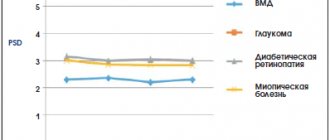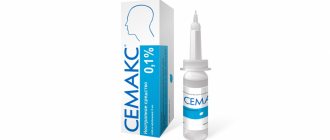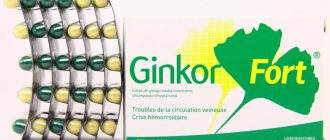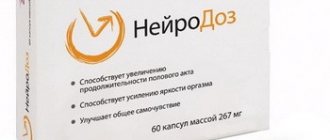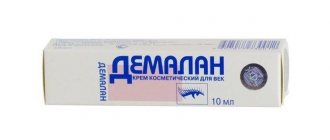In the article we will look at the instructions and analogues for the drug “Grandaxin”.
It is a tranquilizer containing the substance tofisopam, which is a benzodiazepine derivative. This drug is produced in Hungary in tablet form. "Grandaxin" is considered a daytime tranquilizer, taken in the first half of the day.
This medicine appeared in our country relatively recently, but has already established itself as a reliable and effective medicine. Doctors of various specialties use this drug in their medical practice. This drug is dispensed from pharmacies with a doctor's prescription.
But there are analogues of Grandaxin that can be purchased at a pharmacy without a prescription. They will be presented below.
When is it appointed?
Grandaxin has many indications and is successfully used to treat the following diseases:
- Depressive states.
- For nervousness during the premenstrual period.
- Against the background of pain in the heart area, provoked by a psycho-emotional state.
- During the transition period to the menopausal phase.
- For neuroses and neurosis-like conditions, manifested by symptoms such as apathy, depression, obsessive fears and anxiety.
- For the treatment of alcohol withdrawal.
- For conditions requiring anxiolytic adjustment without a pronounced muscle relaxant effect.
Anecdotal evidence suggests that Grandaxin works particularly well when taken by women rather than by men. This may be due to the fact that most of the available indications for the use of this drug are for women and with hormonal changes in the fairer sex.
Other effective drug substitutes
Substitutes for Grandaxin are available on the pharmacological market, which share the same therapeutic direction with it.
Adaptol
Adaptol is an anticonvulsant drug based on tramethyltetraazabicyclooctanedione. The medicine is prepared in tablets. The drug has a moderate tranquilizing and anti-anxiety effect, which relieves the feeling of nervous and emotional overstrain, the feeling of constant anxiety, fear and anxiety.
The sedative effect does not interfere with coordination of movements and intellectual activity. Adaptol also has nootropic properties and improves cognitive function. The medication does not have a hypnotic effect.
Adaptol is used in the treatment of such disorders:
- neuroses with emotional instability and irritability;
- feelings of fear and anxiety;
- pain in the myocardium, not of ischemic origin;
- PMS and menopausal syndrome in women;
- emotional stress (as a cerebroprotector);
- when giving up alcohol and nicotine addiction.
Adaptol should not be used in pediatrics, as well as for the treatment of pregnant women and while breastfeeding. The medicine is not prescribed if the patient’s body is sensitive to the components in the composition.
Prescribed with caution for:
- insufficiency of kidney and liver function;
- hypotension.
Treatment of neurotic and psychoneurotic syndromes - 300-500 mg twice or thrice a day. The maximum the patient can be prescribed is a single dosage of 3 g, and a daily dosage of 10 g. The duration of the medication course is from several days to 3 months. Adaptol is taken without being tied to a diet. Therapy for nicotine addiction – 500-1000 mg three times a day for 5-6 weeks.
Adaptol can be used in combination therapy together with antidepressants, tranquilizers, sleeping pills and sedatives.
Side effects are manifested by the following reactions:
- dyspepsia, diarrhea and heartburn;
- rashes on the body;
- bronchospasms;
- headache and dizziness.
Unlike Grandaxin, Adaptol has a sedative effect, this must be taken into account when using it. Moreover, the latter drug has fewer contraindications, but more side effects.
Noofen
Noofen is a medication with nootropic properties, is a therapeutic substitute for Grandaxin, and is prescribed as a psychostimulant for neuroses and psychoses. The main component in the medicine is aminophenylbutyric acid, which provides the following therapeutic properties:
- tranquilizing;
- antiamnestic;
- antihypoxic.
Noofen is prescribed for:
- emotional and psychoneurotic overexcitation;
- decreased intelligence, memory and attentiveness;
- asthenic state, anxiety with neuroses;
- psychopathy;
- childhood stuttering, tics and enuresis;
- insomnia;
- asthenic syndrome;
- disorders in the vestibular apparatus and Meniere's syndrome:
- menopause.
Not prescribed for the following reasons:
- kidney dysfunction;
- allergy to ingredients in the composition;
- children under 8 years of age;
- lactation period in women.
During pregnancy, you can use Noofen, except for the 1st trimester. The daily dosage for the treatment of neuroses and anxiety is 250-500 mg, the maximum allowable dose is 750 mg. For children over 8 years old for the treatment of enuresis or stuttering - 250-500 mg per day. Side effects include headaches, allergies and dyspepsia.
Noofen, unlike Grandaxin, has a wider list of indications, which includes Meniere's disease. In addition, the latter drug is not used in pediatrics.
Atarax
Atarax is made in tablets with the main component - hydroxyzine. The drug has the following properties:
- sedatives;
- anxiolytic;
- antihistamines.
Atarax also has a nootropic effect - it increases intellectual abilities and improves memory.
Atarax is prescribed for:
- psychomotor overexcitation with increased irritability;
- anxious state;
- internal overvoltage;
- alcohol withdrawal;
- itching of allergic origin.
Do not use Atarax in the treatment of women during pregnancy and breastfeeding, as well as in the treatment of children under 1 year of age. Do not prescribe if you are sensitive to the composition of the drug.
Prescribed with restrictions for the following pathologies:
- myasthenia gravis;
- prostatitis and impaired urination;
- convulsions;
- gastrointestinal pathologies;
- dementia;
- cardiological pathologies.
Standard daily dosages for adult patients are 50 mg, divided into 3 times (12.5 + 12.5 + 25). For severe pathology, the dosage per day is 300 mg.
For the treatment of itching, adults are prescribed 25 mg, and children’s dosages are prescribed by the doctor individually according to the baby’s weight. For premedication, you need to take 50-200 mg 60 minutes before the prescribed anesthesia.
Atarax has a sedative and nootropic effect, which cannot be said about Grandaxin. Also, the first drug is used for premedication, but the second is not.
Sibazon
Sibazon is produced in a solution for injections and in tablets based on diazepam. It is used in dermatology as a sedative to relieve allergic itching.
In psychiatry it is used in the treatment of depressive, anxious, phobic conditions and psychoses, as well as in the alcoholic etiology of withdrawal, psychoses of alcoholic origin.
In neurology, it is prescribed for neuroses with increased irritability and aggression, as well as neurodegenerative pathologies, spinal injuries, cervical osteochondrosis, lumbago, and cerebral palsy. Sibazon is prescribed for the treatment of malignant hypertension, seizures and epilepsy. It is also often used in the 3rd trimester of pregnancy during premature birth to facilitate labor.
Sibazon is not prescribed for:
- comatose state;
- hypersensitivity to the composition of the drug;
- in case of acute alcohol or drug intoxication;
- myasthenia and glaucoma;
- insufficiency of respiratory organs.
It is also not prescribed to children under 1 month with perinatal administration, up to six months with oral administration, as well as for women in the 1st and 3rd trimester of pregnancy and lactation.
The standard single dosage for adults is 5-15 mg. Frequency of administration: 3 procedures per day. Children's dosages are calculated by the doctor according to the child's weight.
For the treatment of neuroses and psychoses using intravenous or intramuscular administration, a single dosage is 5-10 ml. Doses depend on the severity of the progression of the pathology.
Adverse reactions:
- dyspepsia and liver disorders;
- increased body fatigue and headaches;
- skin allergies;
- depression and confusion.
Sibazon has a sedative effect, so it is preferable to Grandaxin for patients with aggressive forms of disorders. The list of indications for Sibazon is broader and even includes hypertension.
See also:
TOP 8 cheap analogues of Diazepam - drug substitutes
Adverse reactions
At the end of the article, we will consider reviews and analogues.
The instructions for Grandaxin indicate that the dosage of this drug should be selected taking into account individual characteristics. It is recommended to take the medication in the first half of the day. This is directly related to the presence of a stimulant effect on the drug, which can cause sleep disturbances. The drug is prescribed in a course that is selected by the doctor for each patient personally. Uncontrolled use of the drug or incorrectly selected dosage can lead to undesirable reactions in therapy. Such reactions include:
- The appearance of disturbances in the functioning of the digestive organs in the form of nausea, dry mouth, flatulence and liver problems.
- The functioning of the nervous system may be accompanied by increased excitability, and, in addition, headaches, sleep disturbances, and the like. In particularly severe cases, confusion may occur. Often, patients may complain of insomnia, especially when the drug is taken in the afternoon. Patients who suffer from epilepsy may experience seizures.
- Other adverse reactions include skin itching of an allergic nature, along with various rashes, muscle soreness and tension.
As practice shows, with adequate use of this drug, side effects are rarely observed. As a rule, this drug is very well tolerated, without requiring discontinuation of treatment. The exception is reactions associated with drug intolerance, since these conditions imply a serious danger to the patient's health.
Grandaxin analogs also cause side effects.
Reviews on the choice of Grandaxin analogues
Reviews about structural analogues of Grandaxin and about itself are generally positive. Patients note the low toxicity of the drug to the body.
Petrov A.S., psychiatrist: “Treatment of mental disorders in patients requires a special approach to treatment. Grandaxin is an effective remedy; it can be used both in monotherapy and in combination. But this drug may cause drowsiness, although not all patients experience this. In this case, it is better to prescribe Atarax, it also improves memory.”
Lyudmila, 35 years old: “A couple of months ago, after severe stress, neurosis appeared and panic attacks began. The doctor prescribed me Adaptol. But I had to return to a specialist again, since this drug is expensive and the course of treatment costs a significant amount. Grandaxin is what you need. And the price is reasonable, and I got rid of my anxiety quite quickly, and didn’t notice any side effects.”
Grandaxin is an effective antipsychotic that is used in psychiatry, dermatology and neurology. The treatment regimen is prescribed by a doctor, who can also select effective analogues of the drug.
Contraindications for use
When should this medicine not be used? In fact, there are not many such situations. These include:
- The presence of hypersensitivity to the components of the dosage form.
- The development of pathological conditions accompanied by increased nervousness, and at the same time psychomotor agitation or deep depression.
- In the presence of apnea syndrome in amnesia.
- Against the background of respiratory failure at the stage of decompensation.
- Against the background of simultaneous treatment with drugs such as Cyclosporine, Tacrolimus and Sirolimus.
- During gestation at the beginning of pregnancy.
How is the drug prescribed?
When choosing Grandaxin, doctors, as a rule, take into account the presence of certain contraindications and decide whether to prescribe this drug or replace it with other medications. Immediately before prescribing the medication, the specialist conducts a detailed survey along with an examination of the patient. In the treatment of neuroses and neurosis-like conditions in order to eliminate anxiety, obsessive fear and other symptoms, in addition to Grandaxin, other medications are used. One of them is Afobazol.
Next, let's move on to considering analogues of Grandaxin.
The advantage of "Grandaxin"
The cost of this medication often forces patients to look for a more adequate replacement. The pharmacological industry produces a number of drugs with an identical mechanism of action. But it is worth considering that the choice must be as safe as possible. "Grandaxin" differs from its substitutes in the following:
- This medication does not cause dependence or addiction in patients.
- This medicine is not prohibited for use by pregnant women, with the exception of late pregnancy.
- "Grandaxin" does not cause poisoning when used while intoxicated.
- This medication has mild side effects and is easily tolerated by most patients.
You should definitely pay attention to these features when choosing drugs that cost less, since they may not have the same therapeutic effects.
So, let’s name a list of tablets with a similar effect, first of all, this is “Adaptol” along with “Phenibut”, “Phenazepam”, “Afobazol” and “Neurol”. These are just some of the medications that can replace Grandaxin. Analogues do not always have a similar effect. Therefore, it is advisable to read their instructions before making a choice.
What to replace the drug with?
In accordance with the instructions for use of Grandaxin, this medicine is strictly contraindicated in patients with pronounced psychomotor agitation, and in addition, in case of respiratory decompensated failure and at the beginning of pregnancy. When using the drug without observing the above contraindications, the risks of severe consequences, including death, are quite high.
Some over-the-counter analogues of Grandaxin have a similar effect, but with less pronounced side symptoms. For example, the drug Afobazol has a similar tranquilizing effect, since its active substance is the same as Grandaxin. True, Afobazol is more expensive. Another analogue is “Adaptol”. It is classified as a daytime tranquilizer; this analogue can cause sleep disturbances and increased nervousness. The effect of this substitute is not so strong, and this medicine has a cumulative effect.
Phenibut is a strong sedative used immediately before surgery. This drug causes very strong drowsiness, and produces the opposite effect compared to Grandaxin. Phenibut should not be used if there is apathy or intolerance to its components.
Next, we will consider these analogues cheaper than Grandaxin in more detail.
The cheapest analogues of Grandaxin
Cheap Russian-made analogues are not inferior in their effectiveness to Grandaxin and foreign substitutes.
Alprazolam
Alprazolam is an analogue of Grandaxin with the same active ingredient – alprazolam. The drug has the following properties:
- antidepressant and sleeping pills;
- anticonvulsant and muscle relaxant.
The drug helps the patient fall asleep quickly, reduces the frequency of nightmares, anxiety attacks, fear and anxiety.
Alprazolam is prescribed for the following psychoneurological conditions:
- neuroses and psychoses;
- anxiety-depressive and reactive-depressive states;
- decreased mood, increased irritability, nervousness and aggression;
- decreased or loss of appetite due to neurotic depression;
- apathy towards life and suicidal thoughts and moods;
- increased panic, development of phobias and paranoia.
Medicine is not prescribed in the following cases:
- myasthenia gravis and obstructive pathologies of the respiratory system in the acute phase of development;
- cardiogenic shock and coma;
- intoxication with alcohol or micanites (hypnotics, analgesics or psychotropic drugs);
- insufficiency of respiratory system functions;
- angle-closure glaucoma;
- severe depression;
- allergy to the medicinal composition.
The drug is also not used in pediatric practice, during pregnancy and lactation.
Daily doses of Alprozalam are designed to be distributed over 2-3 doses and depend on the pathology and the degree of its progression:
- state of panic and depression - 0.1-0.2 mg for 1-2 weeks, after which the doctor increases the dosage to 3-6 mg per day;
- state of anxiety – 0.7-1.5 mg. Therapeutic dosage – 10 mg. An acute attack of anxiety can be relieved within 3-5 days with maximum dosages. The average medication course lasts 2-3 months;
- Cancellation should be carried out gradually, reducing the dosage by 500 mcg every 3-4 days. Discontinuation of the drug occurs within 14-45 days.
Adverse reactions most often appear at the initial stage of treatment in the form of drowsiness, headache, euphoria, as well as allergies and dyspepsia.
The difference from Grandaxin is the need for a gradual dose reduction at the end of treatment and a wider list of contraindications.
Phenazepam
Phenazepam is a tranquilizer based on bromodihydrochlorophenylbenzodiazepine, which actively affects brain neurons. Has the following properties:
- sedative and hypnotics;
- anxiolytic and anticonvulsant.
Phenazepam is used in the treatment of psychoneurological pathologies with causeless restlessness and anxiety. It is also recommended to use the medicine for epilepsy, attacks of depression and apathy, as well as panic attacks and for the treatment of phobias. Phenazepam is often used as part of combination therapy to relieve symptoms of intoxication of the body with alcohol, drugs, and medications.
Medicine is not prescribed for the following reasons:
- apnea, bronchial asthma, disorders of the respiratory system;
- myasthenia gravis;
- coma and cardiogenic shock;
Also, Phenazepam is not prescribed to children, pregnant and lactating women.
A single dosage of Phenazepam is 0.25-0.5 mg. You need to take 2-3 such doses per day. The dose of medication for the treatment of epilepsy per day is 2-10 mg. Adverse reactions do not occur often, but can be expressed in dizziness, ataxia and headache, dyspepsia and skin allergies.
Grandaxin, unlike Phenazepam, does not produce a sedative effect, but the first drug is rarely used to treat patients with epilepsy.
Phenibut
Phenibut is an anti-anxiety agent that also has nootropic and antioxidant properties that protect neurons from free radical damage and will also improve cognitive function. The active substance is aminophenylbutyric acid.
Phenibut is used in the treatment of the following psychoneurological pathologies:
- mental-emotional and asthenic overstrain;
- anxiety, as well as paranoia, unjustified anxiety;
- insomnia, nightmares, fear and a large number of phobias;
- Meniere's syndrome and deviations in the functioning of the vestibular apparatus;
- stuttering, tics in children;
- autonomic dysfunctions.
The medication is also used in the treatment of alcoholism and relief of withdrawal symptoms.
Do not use Phenibut for liver and kidney dysfunction, as well as ulcerative and erosive pathologies of the digestive organs. It is prohibited to prescribe if the patient is allergic to the medicinal composition of Phenibut, as well as during lactation and in pediatrics up to 3 years. During pregnancy, you need to take the medicine in dosages strictly prescribed by your doctor.
Taking pills is not tied to eating. For children, the daily dosage is 20-250 mg (1-3 doses), and for adult patients - 20-750 mg (2-3 doses).
Phenibut rarely exhibits negative effects. At the initial stage of treatment, dyspepsia with jaundice may occur, and skin rashes are also likely. The central nervous system reaction is headache, dizziness and drowsiness.
The difference between Grandaxin and Phenibut is the contraindications, of which the latter drug has more. But at the same time, Phenibut is used to treat a wider range of diseases.
Elzepam
Elzepam is a tranquilizer of the benzodiazepine group with the main component bromodihydrochlorophenylbenzodiazepine. The medication has a sedative-hypnotic and anxiolytic effect on the central nervous system with an anticonvulsant and muscle relaxant effect.
Elzepam is produced in the form of tablets, as well as in the form of a solution for intravenous and intramuscular administration.
Medication is prescribed for the following disorders:
- neurotic and psychopathic disorders with emotional and nervous overstrain;
- reactive psychoses;
- senesto-hypochondriacal disorders with obsessive thoughts, insomnia;
- withdrawal syndrome in substance abuse and the chronic stage of alcoholism;
- epilepsy of various etiologies.
- muscle fiber rigidity and hyperkinesis;
- athetosis and vegetative lability.
It is prohibited to use Elzepam in therapy for the following reasons:
- hypersensitivity to the drug composition;
- coma and cardiogenic shock;
- myasthenia gravis;
- closed-type glaucoma;
- intoxication with alcohol and drugs;
- state of severe depression.
Elzepam is also not used in pediatric practice, and is not prescribed during the lactation period or for women in the 1st trimester of pregnancy.
Prescribed with restrictions for:
- liver and kidney dysfunction;
- pathologies of parts of the brain and hyperkinesis;
- apnea and psychosis;
- in old age.
The drug is administered intramuscularly or intravenously using a dropper to relieve anxiety, psychomotor overexcitation and fear, 0.5-1 mg. The dosage of the solution per day is 3-5 mg, with severe progression of the pathology - 7-9 mg.
For the treatment of neurotic pathologies and psychopathic conditions, tablets are prescribed with an initial dosage of 0.5-1 mg twice or thrice a day. After 3-4 days, the dosage is increased to 4-6 mg. Treatment of epilepsy – 2-10 mg per day, divided into 2-3 doses. Alcohol syndrome is treated with tablets or intramuscular injections with 2.5 mg of active substance per day.
Elzepam has an anticonvulsant and sedative effect, so the list of indications for its use is wider than that of Grandaxin. But the cost of the first one is higher.
Mebicar
Mebicar is an anxiolytic drug that does not have a direct sedative effect, but regulates night sleep. The active component in the drug is tramethyltetraazabicyclooctanedione. Tranquilizing properties do not have a muscle relaxant effect, which does not provoke disturbances in motor coordination. Mebicar also has an anticonvulsant effect.
Prescribe medication for:
- neuroses with increased irritability, anxiety;
- anxiety-paranoid syndrome in mental pathologies, including schizophrenia;
- psychoses of vascular etiology;
- verbal hallucinosis;
- IHD, cardialgia and in the post-infarction period;
- alcohol intoxication.
The medication is not prescribed if you are sensitive to the drug composition, as well as for children under adulthood, lactating and pregnant women.
The daily dosage of Mebicar is 3 mg, divided into 2-3 doses. The daily maximum dose of medication is 10 mg. Side effects include skin itching, dyspepsia, blood pressure fluctuations and a decrease in body temperature.
Unlike Grandaxin, Mebikar does not alleviate the condition of patients with severe skin itching, and is also not used for PMS and menopause.
Hydroxyzine
Hydroxyzine is a medication with an anxiolytic effect. The active component in the medicine is hydroxyzine hydrochloride, which provides the medicine with the following properties:
- antiemetic and sedative;
- antipruritic and tranquilizing.
The medication is used in the treatment of such pathologies:
- mental overexcitation and anxiety;
- adaptation disorder;
- nervousness, aggressiveness and irritability;
- itching of the skin due to allergies (contact dermatitis and urticaria);
- alcohol syndrome and alcohol intoxication.
Hydroxyzine is not prescribed for the following reasons:
- hypersensitivity to the composition in the medication;
- lactose intolerance;
- porphyria.
It is also not used in the treatment of children under 3 years of age, as well as women during pregnancy and while breastfeeding a child.
Use with caution when:
- arrhythmias and heart failure;
- low blood pressure;
- myasthenia and glaucoma;
- ulcerative pathologies in the gastrointestinal tract;
- dementia and epilepsy;
- urine retention in the body;
- hyperthyroidism.
For the treatment of children with allergic itching, daily dosages are prescribed according to the patient’s weight:
- 3-6 years – 1-2.5 mg/kg;
- after 6 years – 1-2 mg per 1 kg of weight.
The frequency of taking tablets is 2-3 times a day. Adult dosages for the treatment of skin itching – 1 tablet at night. For the treatment of anxiety - 125 mg three times a day, followed by doubling the dosage. For premedication before anesthesia - 50-200 mg in the evening before the procedure.
Hydroxyzine has a wider spectrum of action compared to Grandaxin, while the list of contraindications for the first drug is also wider. In addition, Grandaxin is not used to prepare patients for surgical interventions.
See also:
TOP 10 analogues of Chlorprothixene - substitutes for children and adults
"Afobazol" and "Grandaxin"
"Afobazol" like "Grandaxin" is classified as an anxiolytic. This drug is produced in tablets and is usually prescribed for a twenty-day course. This period is needed to achieve the maximum pharmacological effect. The active ingredient of this medicine is fabomotizole. Afobazole is used in the presence of anxiety disorders, against the background of neurasthenia and adaptation disorders.
Since this analogue of Grandaxin can be purchased without a prescription, it is very popular.
What analogues can you buy without a prescription?
You can purchase the medicine only if you have a prescription written by your doctor. It is impossible to find this drug on the open market. However, there are a number of its substitutes, which are sold over-the-counter in pharmacies. It is worth considering that almost all of these analogues have a lesser therapeutic effect on the human psyche.
So, you can find the following medications on the open market that have a similar therapeutic effect to Grandaxin:
- Valerian extract.
- Melissa officinalis preparations.
- Valevigran.
- Ration.
- Motherwort tincture.
"Atarax" and "Grandaxin"
Another equally popular analogue is the drug Atarax. This medicine contains a substance called hydroxyzine. This component has anxiolytic activity. Atarax is produced in two forms, namely tablets and a solution for injection into the muscle. Unlike Afobazole and Grandaxin, this substitute exhibits a more pronounced sedative effect.
An additional feature of Atarax is the presence of nootropic properties, manifested in concentration and memory improvement. This anxiolytic is prescribed in the presence of internal emotional tension, anxiety disorder, somatic diseases, and, in addition, against the background of alcohol withdrawal. "Atarax" can also be used during the period of preparation for surgical interventions as part of premedication.
This is confirmed by the instructions for the Grandaxin analogue.
Cost of Grandaxin and its analogues
Prices for Grandaxin are in the middle price segment. Foreign analogues are more expensive than Grandaxin, and some of its Russian generics are 3-4 times cheaper.
| Name of the medicine and its analogues | Dosage of the main component in mg | Amount in a package | average price |
| Grandaxin | 50 50 | 20 60 | 365-388 855-879 |
| Alprazolam | 1 1 | 50 20 | 701-722 301-307 |
| Phenazepam | 25 | 50 | 171-190 |
| Phenibut | 250 | 20 | 961-970 |
| Elzepam | 1 | 50 | 95-118 |
| Mebicar | 500 | 20 | 320-400 |
| Hydroxyzine | 10 25 | 10 10 | 231-235 254-279 |
| Adaptol | 300 500 | 20 20 | 1035-1040 1602-1610 |
| Noofen | 250 | 20 | 970-987 |
| Atarax | 25 | 25 | 326-334 |
| Sibazon | 5 | 20 | 28-95 |
[compare name=`Alprazolam|Phenazepam|Phenibut|Elzepam|Mebicar|Hydroxyzine|Adaptol|Noofen|Atarax|Sibazon`]
See also:
TOP 11 analogues of Tofizopam - substitutes for therapeutic effect
"Phenibut" and "Grandaxin"
Sometimes Grandaxin can be replaced with aminophenylbutyric acid medicine, namely Phenibut. True, the differences between these medications are quite significant. "Phenibut" manifests itself as an effective nootropic agent. It is often prescribed for the treatment of diseases that are associated with decreased attention, memory and other functions of the nervous system.
In some cases, Phenibut can be used to treat anxiety disorders and neuroses. "Phenibut" is one of the drugs that are approved and recommended for use in pediatrics.
In fact, it is very difficult to say exactly which of the above medications is the best. The common advantage of all the previously mentioned medications is that they do not have properties that create physical and mental dependence. But, nevertheless, any drugs that affect the psyche and nervous system should be prescribed only by specialists. This applies to analogues of Grandaxin.
List of cheaper substitutes
When it comes to long-term use of any drug, then, of course, patients are concerned about the financial aspect of treatment, because they will have to allocate a certain amount for tablets every month. The natural desire is to undergo a course of therapy using a budget medicine. It is worth noting that a cheaper price will not always mean lower quality.
- Phenazepam.
- Phenibut.
- Afobazol.
- Gidazepam.
- Sibazon.
- Ration.
- Apaurin.
List of good analogues of Grandaxin, which have a lower cost:
Patient reviews
Patients in their reviews indicate that while taking Grandaxin, the drug is well tolerated and has a pronounced effectiveness. "Grandaxin" is effective in cases where neither valerian extracts nor various herbal sedatives help people.
The effect, as patients write, occurs quickly, after three days. But, as reported in reviews, when taking this medication there are side effects. For example, patients report feeling nauseated. It is not recommended that people combine the use of this drug with alcohol; it is reported that in this case, after an hour, they feel unwell along with a severe headache.
According to doctors, this drug, provided that the prescribed dosages are strictly followed, has a pronounced therapeutic effect and causes minimal side reactions.
We reviewed the instructions for use and analogues for the “Grandaxin” product.
Reviews
- Oleg, 36 years old. Due to mental disorders I took Stresam, it had an effect, but still many symptoms still bothered me. The doctor switched me to Grandaxin, I was completely satisfied with this drug.
- Natalya, 27 years old. Against the backdrop of serious emotional trauma associated with the divorce, I developed very strong anxiety and nervousness (although before that I had always been a very balanced person). My health deteriorated so much that I had to see a doctor. At first I was prescribed Phenibut, but it made me very drowsy, which prevented me from working normally. The effect was good though. Therefore, we switched to Grandaxin, it really helped me well, and the drowsiness disappeared almost immediately.

